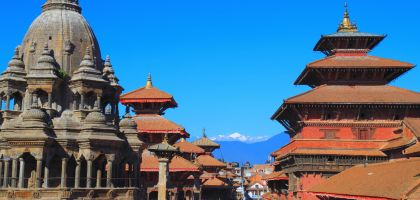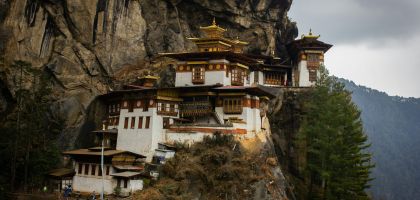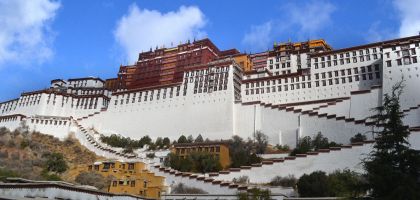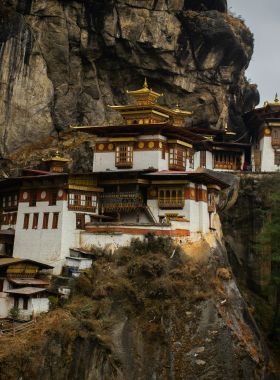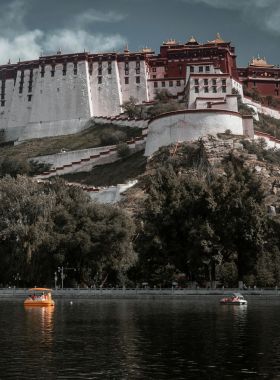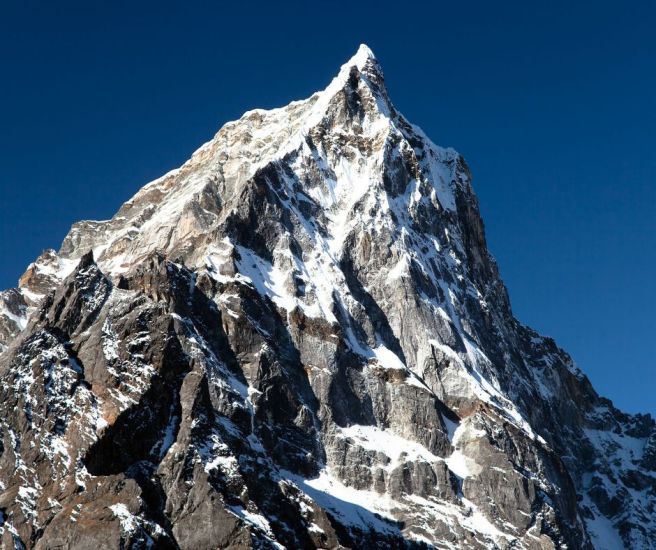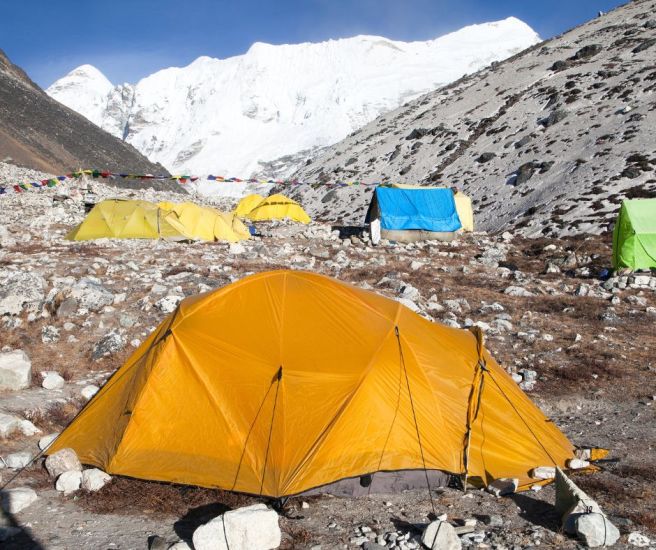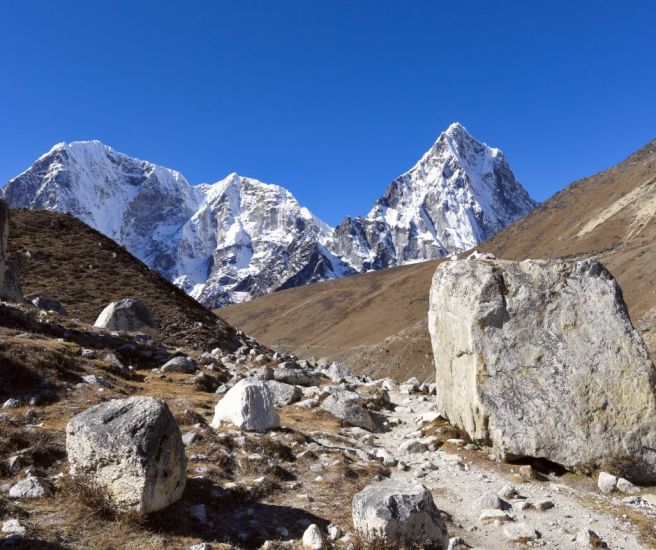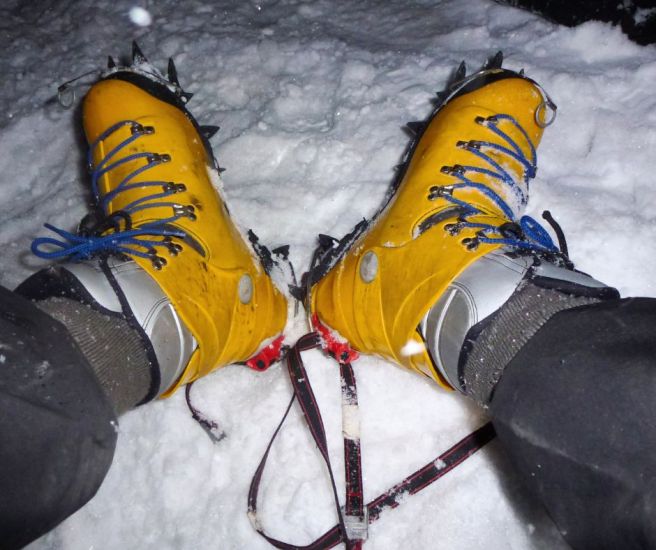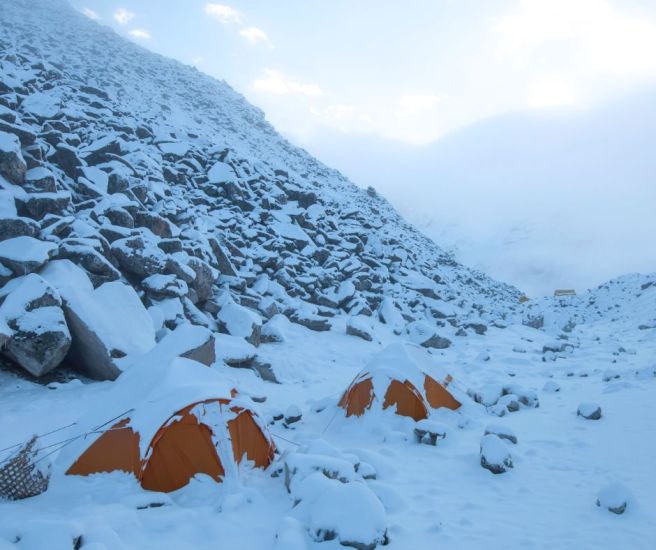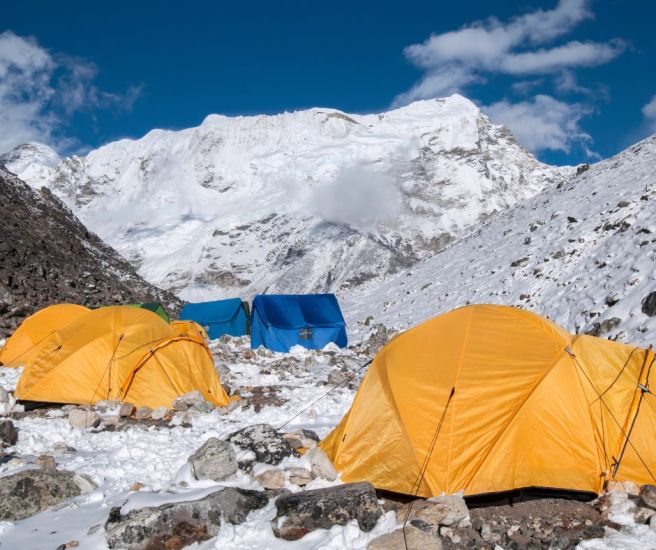Imja Tse (Island Peak) Climbing
16 Days / Nepal
Activity
Difficulty Level
Destinations
Trip Start / End
Max Altitude
Accommodation
Travel Style
Best time to travel
Personalized Travel Advice

Dev Raj Nepal
+977 9851096523
Detailed Itinerary
01
DAY
01
Upon arrival at Tribhuvan International Airport in Kathmandu, you will be greeted by your guide and transferred to your hotel. The remainder of the day is free for relaxation. You can rest and prepare for your upcoming adventure in the Everest region. In the evening, there will be a briefing about the trek, including a discussion of the itinerary, safety guidelines, and an opportunity to meet your fellow trekkers.
Arrival in Kathmandu
Upon arrival at Tribhuvan International Airport in Kathmandu, you will be greeted by your guide and transferred to your hotel. The remainder of the day is free for relaxation. You can rest and prepare for your upcoming adventure in the Everest region. In the evening, there will be a briefing about the trek, including a discussion of the itinerary, safety guidelines, and an opportunity to meet your fellow trekkers.
02
DAY
02
This day begins early with a scenic flight from Kathmandu to Lukla. The 45-minute flight offers breathtaking views of the Himalayas, with snow-capped peaks unfolding before you. Upon arrival in Lukla, we begin our trek to Phakding, crossing suspension bridges and passing through beautiful Sherpa villages. The walk is relatively easy and a perfect start to the trek, allowing time for your body to adjust to the altitude. You’ll spend the night in Phakding at a local teahouse.
Fly to Lukla, then trek to Phakding
This day begins early with a scenic flight from Kathmandu to Lukla. The 45-minute flight offers breathtaking views of the Himalayas, with snow-capped peaks unfolding before you. Upon arrival in Lukla, we begin our trek to Phakding, crossing suspension bridges and passing through beautiful Sherpa villages. The walk is relatively easy and a perfect start to the trek, allowing time for your body to adjust to the altitude. You’ll spend the night in Phakding at a local teahouse.
03
DAY
03
The trail today takes you through lush forests of pine and rhododendron, crossing several suspension bridges over the Dudh Koshi River. The trek is mostly uphill, and the final ascent towards Namche Bazaar can be quite steep. However, the view upon reaching Namche is well worth the effort. Known as the gateway to Everest, Namche is a bustling town and a perfect place to experience Sherpa culture. You’ll stay overnight in Namche Bazaar, where you can enjoy the vibrant atmosphere of this famous trekking hub.
Phakding to Namche Bazaar
The trail today takes you through lush forests of pine and rhododendron, crossing several suspension bridges over the Dudh Koshi River. The trek is mostly uphill, and the final ascent towards Namche Bazaar can be quite steep. However, the view upon reaching Namche is well worth the effort. Known as the gateway to Everest, Namche is a bustling town and a perfect place to experience Sherpa culture. You’ll stay overnight in Namche Bazaar, where you can enjoy the vibrant atmosphere of this famous trekking hub.
04
DAY
04
Acclimatization is crucial at this stage to adjust to the higher altitude and prevent altitude sickness. Spend the day exploring Namche Bazaar, with options to take a short hike to the Everest View Hotel. This vantage point offers panoramic views of Everest, Lhotse, Ama Dablam, and other surrounding peaks. You may also visit the local museum to learn about the Sherpa culture and the history of mountaineering in the region. The day is designed to help your body adjust while enjoying the beauty of the area.
Acclimatization Day at Namche Bazaar
Acclimatization is crucial at this stage to adjust to the higher altitude and prevent altitude sickness. Spend the day exploring Namche Bazaar, with options to take a short hike to the Everest View Hotel. This vantage point offers panoramic views of Everest, Lhotse, Ama Dablam, and other surrounding peaks. You may also visit the local museum to learn about the Sherpa culture and the history of mountaineering in the region. The day is designed to help your body adjust while enjoying the beauty of the area.
05
DAY
05
Today’s trek takes you through alpine forests of pine and juniper, with spectacular views of Mount Everest and Ama Dablam in the distance. We cross the Imja Khola before climbing steadily towards Tengboche. Here, you will find the famous Tengboche Monastery, the largest in the region, where monks gather for prayers and ceremonies. The monastery provides a peaceful setting with magnificent views of Everest and surrounding peaks. You’ll spend the night in Tengboche, soaking in the tranquil atmosphere.
Namche Bazaar to Tengboche
Today’s trek takes you through alpine forests of pine and juniper, with spectacular views of Mount Everest and Ama Dablam in the distance. We cross the Imja Khola before climbing steadily towards Tengboche. Here, you will find the famous Tengboche Monastery, the largest in the region, where monks gather for prayers and ceremonies. The monastery provides a peaceful setting with magnificent views of Everest and surrounding peaks. You’ll spend the night in Tengboche, soaking in the tranquil atmosphere.
06
DAY
06
The trail today leads through the beautiful Pangboche village, where you can visit a small monastery before continuing your trek. The ascent to Dingboche is gradual, but the thinning air becomes noticeable as you climb higher. Once in Dingboche, you’ll be greeted by spectacular views of the surrounding mountains, including Makalu and Lhotse. This village is a popular stopping point for trekkers heading towards Everest Base Camp and is known for its stunning landscapes and high-altitude farming.
Tengboche to Dingboche
The trail today leads through the beautiful Pangboche village, where you can visit a small monastery before continuing your trek. The ascent to Dingboche is gradual, but the thinning air becomes noticeable as you climb higher. Once in Dingboche, you’ll be greeted by spectacular views of the surrounding mountains, including Makalu and Lhotse. This village is a popular stopping point for trekkers heading towards Everest Base Camp and is known for its stunning landscapes and high-altitude farming.
07
DAY
07
Today’s trek is a relatively short walk that takes you to Chhukung. This village offers an incredible view of the towering Island Peak, as well as impressive sights of the surrounding peaks, including Ama Dablam. The trek passes through beautiful alpine meadows and past traditional Sherpa villages. Chhukung is a small but serene place, ideal for resting and preparing for the upcoming acclimatization day.
Dingboche to Chhukung
Today’s trek is a relatively short walk that takes you to Chhukung. This village offers an incredible view of the towering Island Peak, as well as impressive sights of the surrounding peaks, including Ama Dablam. The trek passes through beautiful alpine meadows and past traditional Sherpa villages. Chhukung is a small but serene place, ideal for resting and preparing for the upcoming acclimatization day.
08
DAY
08
An essential acclimatization day is scheduled to prepare for the summit attempt on Island Peak. You’ll ascend the Chhukung Ri, a peak offering one of the best panoramic views of the surrounding mountains. The summit of Chhukung Ri is a moderate climb, and the effort is rewarded with breathtaking views of the entire Everest region. After reaching the top, you’ll return to Chhukung for the night, allowing your body to adjust to the higher altitude.
Acclimatization: Climb Chhukung Ri (5,546m), return to Chhukung
An essential acclimatization day is scheduled to prepare for the summit attempt on Island Peak. You’ll ascend the Chhukung Ri, a peak offering one of the best panoramic views of the surrounding mountains. The summit of Chhukung Ri is a moderate climb, and the effort is rewarded with breathtaking views of the entire Everest region. After reaching the top, you’ll return to Chhukung for the night, allowing your body to adjust to the higher altitude.
09
DAY
09
Today, you trek to the base camp of Island Peak. This is a short but steep climb, and as you approach the base camp, you’ll feel the rugged beauty of the Himalayas all around you. The base camp itself is surrounded by glaciers and high mountain walls, providing a spectacular setting. After arriving, you’ll have time to relax, prepare for the climb ahead, and soak in the breathtaking beauty of your surroundings.
Chhukung to Island Peak Base Camp
Today, you trek to the base camp of Island Peak. This is a short but steep climb, and as you approach the base camp, you’ll feel the rugged beauty of the Himalayas all around you. The base camp itself is surrounded by glaciers and high mountain walls, providing a spectacular setting. After arriving, you’ll have time to relax, prepare for the climb ahead, and soak in the breathtaking beauty of your surroundings.
10
DAY
10
A crucial part of your journey, this day is dedicated to pre-climb training. You’ll receive instruction on how to use mountaineering equipment such as crampons, ice axes, and harnesses. The guide will go over climbing techniques, including how to navigate the icy slopes and crevasses safely. This preparation is vital for your safety during the ascent of Island Peak. After the training, you can rest and relax before the big climb tomorrow.
Pre-Climb Training at Island Peak Base Camp
A crucial part of your journey, this day is dedicated to pre-climb training. You’ll receive instruction on how to use mountaineering equipment such as crampons, ice axes, and harnesses. The guide will go over climbing techniques, including how to navigate the icy slopes and crevasses safely. This preparation is vital for your safety during the ascent of Island Peak. After the training, you can rest and relax before the big climb tomorrow.
11
DAY
11
The day begins early with a challenging summit attempt. The climb to the top of Island Peak will take approximately 8-10 hours, depending on conditions. You’ll ascend steep, rocky sections and icy slopes before reaching the summit. The effort will be rewarded with breathtaking views of the surrounding peaks, including Everest, Lhotse, Makalu, and Nuptse. After celebrating at the summit, you’ll descend back to base camp, where you will rest and recover after a long, strenuous day.
Island Peak Summit (6,189m), Return to Base Camp
The day begins early with a challenging summit attempt. The climb to the top of Island Peak will take approximately 8-10 hours, depending on conditions. You’ll ascend steep, rocky sections and icy slopes before reaching the summit. The effort will be rewarded with breathtaking views of the surrounding peaks, including Everest, Lhotse, Makalu, and Nuptse. After celebrating at the summit, you’ll descend back to base camp, where you will rest and recover after a long, strenuous day.
12
DAY
12
After summiting Island Peak, the descent begins. You’ll trek back down through the valleys to the village of Pangboche. The day will be spent descending, which allows for easier breathing at lower altitudes. Pangboche is a peaceful village known for its monastery and its scenic location near the Imja Khola. It’s a great place to relax and take in the serene atmosphere.
Island Peak Base Camp to Pangboche
After summiting Island Peak, the descent begins. You’ll trek back down through the valleys to the village of Pangboche. The day will be spent descending, which allows for easier breathing at lower altitudes. Pangboche is a peaceful village known for its monastery and its scenic location near the Imja Khola. It’s a great place to relax and take in the serene atmosphere.
13
DAY
13
The trail today takes you back towards Namche Bazaar. The descent is gradual but steady, passing through forests of juniper and pine trees. Once in Namche, you can enjoy a warm meal and rest. This evening, you can reflect on your incredible journey and perhaps explore Namche’s shops for souvenirs.
Pangboche to Namche Bazaar
The trail today takes you back towards Namche Bazaar. The descent is gradual but steady, passing through forests of juniper and pine trees. Once in Namche, you can enjoy a warm meal and rest. This evening, you can reflect on your incredible journey and perhaps explore Namche’s shops for souvenirs.
14
DAY
14
This is a long day as you make your way back to Lukla. You’ll pass through familiar landscapes, crossing suspension bridges and descending through beautiful forests. Once you arrive in Lukla, you’ll have time to rest and celebrate the completion of your trek.
Namche Bazaar to Lukla
This is a long day as you make your way back to Lukla. You’ll pass through familiar landscapes, crossing suspension bridges and descending through beautiful forests. Once you arrive in Lukla, you’ll have time to rest and celebrate the completion of your trek.
15
DAY
15
After breakfast, you’ll catch a flight from Lukla to Kathmandu. Upon arrival in Kathmandu, you’ll be transferred to your hotel. The rest of the day is free for relaxation or exploration of the vibrant city. You can visit local markets, shop for souvenirs, or unwind after your trek.
Fly to Kathmandu
After breakfast, you’ll catch a flight from Lukla to Kathmandu. Upon arrival in Kathmandu, you’ll be transferred to your hotel. The rest of the day is free for relaxation or exploration of the vibrant city. You can visit local markets, shop for souvenirs, or unwind after your trek.
16
DAY
16
Your journey ends today. You’ll have free time in Kathmandu for last-minute shopping or sightseeing before being transferred to Tribhuvan International Airport for your departure flight.
Final Departure
Your journey ends today. You’ll have free time in Kathmandu for last-minute shopping or sightseeing before being transferred to Tribhuvan International Airport for your departure flight.
Includes / Excludes
Inclusions
-
Airport pickups and drops in a private vehicle
-
Accommodation in Kathmandu on the twin sharing basis
-
Teahouse accommodation during the trek
-
Tented accommodation during the climb
-
All meals mentioned in the itinerary
-
Domestic flights (Kathmandu- Lukla -Kathmandu)
-
English-speaking mountain guide
-
Professional climbing guide
-
Personal porter
-
Climbing Gear
-
All necessary permits
Exclusions
-
Nepalese visa fee.
-
Meals not mentioned in the itinerary
-
Altitude chamber (PAC) or oxygen
-
Travel and rescue insurance
-
Personal expenses
-
Tips for guides and porters
Trip Info
The best time for Island Peak climbing is during the pre-monsoon (spring) and post-monsoon (autumn) seasons. These two periods offer the most favorable weather conditions and the clearest skies, essential for peak climbing and trekking in the Everest region.
Spring (March to May): Spring is a fantastic time to visit Nepal for peak climbing. During this season, temperatures are relatively mild, and the skies are clear, offering unobstructed views of the towering peaks. The weather is also stable, and there is little to no snowfall, which makes trekking and climbing safer. The spring season also brings beautiful rhododendron blooms, enhancing the already stunning landscapes. This is one of the most popular times for trekking and climbing in Nepal, so it’s ideal for those seeking to experience the region at its most vibrant.
After the monsoon season, autumn brings crisp air, clear skies, and stable weather, making it the second-best time for climbing Island Peak. The days are sunny and pleasant, with cool nights that are perfect for trekking. The trails are less muddy than during the monsoon, and the mountain views are some of the clearest you will experience. Autumn is also a popular trekking season, so you can enjoy a bustling atmosphere along the trail.
During the Island Peak Climbing Trek, you’ll experience a delightful mix of traditional Nepali and international cuisines, tailored to provide the necessary energy for this challenging adventure. As you pass through the Sherpa villages, meals are typically served in tea houses, offering a hearty selection of local dishes, including dal bhat (lentil soup with rice), momo (dumplings), and thukpa (noodle soup). These dishes are not only nutritious but also filling, perfect for sustaining you through long days of trekking.
While trekking in Nepal, you’ll also find familiar Western foods like pasta, pizza, and pancakes, which are popular in the higher altitudes. As you climb higher, the food offerings become simpler, but the emphasis remains on energy-dense, easy-to-digest meals that help with acclimatization. Hot drinks like masala chai (spiced tea) and soup are common and provide warmth and comfort. At base camp, expect a mix of these traditional dishes, with extra care given to ensuring proper nutrition and hydration to support your physical demands. Meals are designed to keep you fueled and hydrated, crucial for your climb to Island Peak.
During your trek in the Everest region, accommodation will primarily be in teahouses and camps, offering an authentic and comfortable experience while you explore the stunning Himalayas. Here’s what you can expect:
Teahouses (Lodging along the Trail)
Teahouses are small guesthouses run by local Sherpa families, providing trekkers with basic yet cozy accommodations. These teahouses are scattered along the trekking route and offer a warm and welcoming atmosphere where you can meet fellow trekkers and experience the local hospitality. Most teahouses offer twin-share rooms with a bed, blankets, and pillows. Some rooms may have additional amenities, but it’s important to note that the higher you go, the more basic the accommodations become. Teahouses often use stoves or small heaters in the common areas, but heating in the rooms can be minimal.
Camping (Island Peak and Higher Altitudes)
When you reach higher altitudes, specifically when trekking to Island Peak Base Camp, you will stay in tents. This camping experience is fully equipped for trekkers’ needs, and the camps are set up in picturesque spots, allowing you to enjoy the raw beauty of the Himalayas. On the trek to Island Peak Base Camp, tents will be used for the duration of your stay. The tents are designed for high-altitude conditions and are equipped to provide comfort and warmth. You will be provided with a comfortable sleeping mat and warm sleeping bags. During camping, meals will be prepared by a professional cook who accompanies the trekking team. Expect hearty meals to ensure you have the energy for your climb and treks.
The accommodations on the Everest Region trek are designed to provide trekkers with a safe, comfortable, and memorable stay. While the amenities may be simple, they offer an authentic experience of life in the Himalayas and an opportunity to connect with the local Sherpa culture.
The climbing route to Island Peak (6,189m) is a thrilling yet demanding journey, combining both trekking and mountaineering. The climb begins with a trek to the Island Peak Base Camp (5,200m), located amidst a stunning landscape of glaciers and towering peaks like Ama Dablam and Lhotse. From the base camp, climbers undergo a pre-climb training session where they learn essential mountaineering techniques, such as using crampons, ice axes, and ropes. The training ensures that trekkers are prepared for the technical aspects of the climb, especially when navigating icy slopes and challenging rock ridges.
On the summit day, the ascent begins early in the morning to avoid soft snow conditions. The climb involves a combination of snow and rock climbing, with the route becoming progressively steeper as you ascend. The final section to the summit involves a steep, snow-covered ridge where climbers often use fixed ropes for safety. The dangers on this route include crevasses, which can be hidden under snow or ice, making it crucial to follow the guide’s instructions and be mindful of your footing. The high-altitude conditions can be taxing, and climbers must be prepared for the technical challenges that come with ascending a 6,000-meter peak. Once at the summit, you are rewarded with breathtaking panoramic views of some of the highest peaks in the world, including Mount Everest, Lhotse, and Makalu. The descent back to base camp is no less challenging but is typically faster, allowing climbers to rest and recover.
Climbing Island Peak comes with several inherent risks, primarily associated with the high altitude and technical challenges. The most significant danger is altitude sickness, as the peak stands at 6,189 meters. Climbers are susceptible to Acute Mountain Sickness (AMS), which can be severe if proper acclimatization is not followed. Symptoms can range from headaches and dizziness to more serious conditions like High Altitude Pulmonary Edema (HAPE) or High Altitude Cerebral Edema (HACE). The risks of falling and injury due to the challenging terrain are also considerable. The final ascent involves icy slopes and steep rock sections, both of which require precise technique and careful footing.
Another significant danger is the presence of crevasses and glaciers on the route, especially in the higher sections. Crevasses can be hidden under a layer of snow, and a fall could result in severe injury or even worse. The rocky ridges and slippery conditions further increase the physical difficulty of the climb. Climbers must be prepared with mountaineering equipment such as crampons, ice axes, and ropes to safely navigate these challenges.
Despite the risks, the rewards of climbing Island Peak are unmatched. Reaching the summit of this 6,189-meter peak is a remarkable achievement and offers climbers some of the most stunning panoramic views in the world. From the top, you’ll witness an incredible landscape, with towering peaks like Mount Everest, Lhotse, Makalu, and Ama Dablam surrounding you. The sense of accomplishment from conquering the technical and physical challenges required to summit Island Peak is unparalleled.
Beyond the summit views, the journey itself offers an opportunity to immerse yourself in the rugged beauty of the Everest region. The trek through Sherpa villages, alpine forests, and high-altitude landscapes is rewarding in its own right. The sense of camaraderie and teamwork that develops among climbers and guides, coupled with the personal growth experienced during the climb, makes the journey to Island Peak a life-changing adventure.
Scenic Trekking and Beautiful Landscapes
Climbing Island Peak combines the thrill of trekking in Nepal through the stunning Everest region with the challenge of peak climbing in Nepal. You will begin your journey with a scenic trek through beautiful Sherpa villages, lush forests, and alpine meadows, where you can enjoy the breathtaking views of snow-capped peaks like Ama Dablam, Makalu, and Everest itself. The trail winds through remote valleys and offers a unique opportunity to experience the rich Sherpa culture while surrounded by the stunning landscapes of the Himalayas.
Challenging Physical Endurance
The trek to Island Peak is physically demanding, requiring you to hike long distances with significant altitude gain. At higher elevations, the air becomes thinner, which can make trekking more strenuous. Acclimatization days are crucial to help your body adjust to the altitude and prevent altitude sickness. Expect to feel fatigued at times, but the sense of accomplishment and stunning vistas along the way will keep you motivated. You’ll also face colder temperatures and fluctuating weather, especially as you ascend to the higher camps.
Technical Climbing
Once you reach Island Peak Base Camp, the real mountaineering challenge begins. Expect a mix of steep rock and snow slopes that require mountaineering skills like using crampons, ice axes, and ropes. The climb to the summit is strenuous and will test your physical strength and climbing abilities. Steep ascents, snow and ice-covered terrain, and technical rock scrambling will demand your focus and determination. At the summit, you’ll be rewarded with breathtaking panoramic views of Everest and the surrounding peaks.
Potential Risks
While the adventure is exhilarating, there are potential risks. The challenging terrain includes steep rocky sections, ice fields, and crevasses that need to be navigated carefully. As with any high-altitude climb, altitude sickness is a concern, which is why acclimatization is essential. Weather conditions, including snowfall and high winds, can also be unpredictable, adding an element of risk. Proper training, preparation, and a skilled guide are essential for a safe experience.
Unmatched Rewards
The climb to Island Peak summit offers a feeling of immense satisfaction. Reaching the top means you’ve conquered one of the most accessible trekking peaks in Nepal, with a direct view of Mount Everest and the surrounding peaks. The sense of accomplishment and the sheer beauty of the Everest region make it all worth it. Additionally, you’ll return with not only memories of stunning landscapes but also the confidence gained from completing a physically demanding and technical mountaineering challenge.
FAQs
Personalized Travel Advice

Dev Raj Nepal
+977 9851096523
